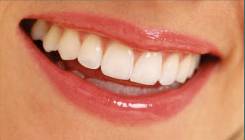Home >> Infection Control
Infection Control
Pathogenic microorganisms are responsible for various diseases. Therefore in order to limit the disease spread in dental office, infection control procedures must be followed. Universal precautions must be taken for all patients (i.e. all patients should be considered infective), as we do not know which patient is infected.
Following measures should be undertaken:
- Dentist must wash hands before and after carrying out any dental procedure.
- Wearing personal protective equipment’s like mouth masks, gloves, eye wear and protective clothing.
- All instruments should be sterilized before use. Sterilization techniques include autoclaving, glass bead sterilizer, hot air oven and also the chemical methods of sterilization.
- Rubber dam should be used to prevent spattering.
- Needles, masks and gloves should be disposed after use.
- Surface disinfection should be carried out in the working area.
- Use of clean and sterile water supply to the dental chair.
- Suction tip should be replaced after use for every patient.
- Proper disposal of contaminated items should be carried out.
Sterilization
Sterilization : Is a process, physical or chemical that destroys or eliminates all forms of life specially micro-organisms. It is also defined as the process by which an article, surface or medium is freed of all living micro-organisms either in the vegetative or spore state. Disinfection: Reducing the number of pathogens on objects or materials so that they pose no threat of disease. Accepted methods of sterilization adopted at the clinic are:- Dry heat sterilization
- Steam pressure sterilization- Autoclave.
- Chemical vapor pressure sterilization- Chemiclave.
- Ethylene oxide sterilization.
- Steam under pressure – autoclave
- Water boils when its pressure equals that of surrounding atmosphere.
- Sterilization is carried out at temp. Between 108°c and 147°c.
- Temperature 121°c holding time 15 minutes at pressure 15 psi is the optimum for moist heat sterilization.
- Flash autoclave- At 134°C & 32 psi pressure for three & half minutes
Most Acceptable Method:
Autoclave
Advantage- Most effective to destroy all forms of microorganisms
- Short sterilizing time
- Economical
- No remnants of any toxic residue
- Pressure & temperature can be controlled
- 116°C (240°F) 60 min.
- 118°C (245°F) 36 min
- 121°C (250°F) 15lbs 15-20 min.
- 125°C (257°F) 16 min.
- 132°C (270°F) 30lbs 04 min.
- 138°C (280°F) 1½ min.
- Temperature: 121 deg C for 15-20 minutes at 15 psi.
Chemical Disinfection
KEY - STEPS
- Decontaminate instruments and other items that may have been contaminated with blood and body fluids, and thoroughly clean and dry them before placing them in the disinfectant solution.
- Completely immerse all items in the high-level disinfectant.
- Soak for 20 minutes.
- Remove items using sterile forceps or gloves.
- Rinse well with boiled and filtered (if necessary) water and air dry.
- Store in a dry, high-level disinfected, covered container.
| Disinfectant | Effective concentration |
|---|---|
| Chlorine | 0.1% |
| Formaldehyde | 8% |
| Glutaraldehyde | 2-4% |
| Hydrogen peroxide | 6% |
WASTE DISPOSAL
Yellow Plastic Bags:
- Human Anatomical Waste.
- Animal Waste.
- Microbiology Waste.
Red Disinfected:
- Microbiological Solid Waste (Waste Iv Tubes Catheters, Etc.)











